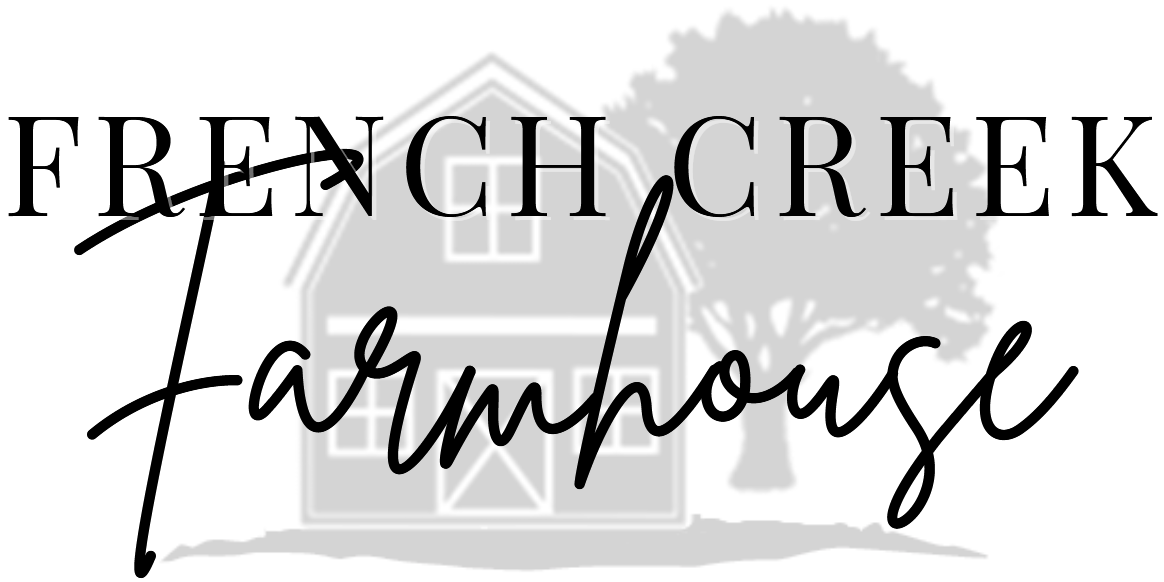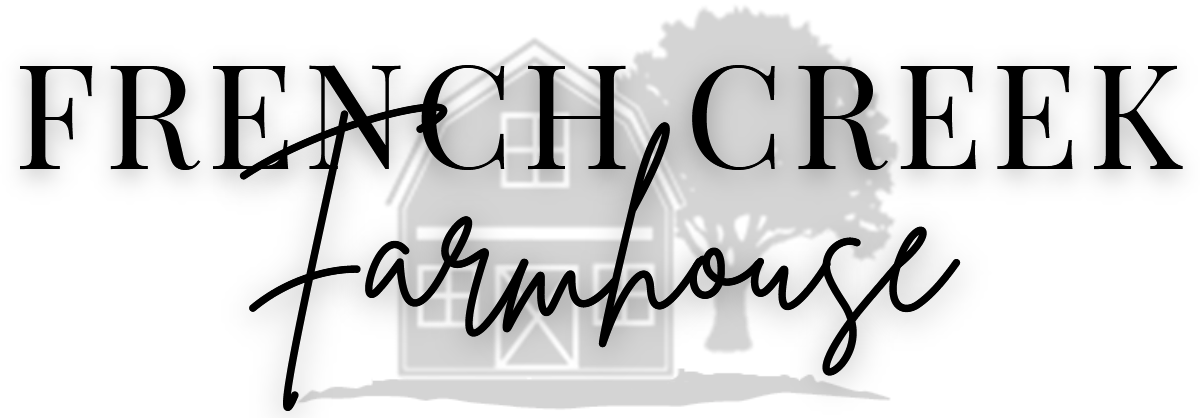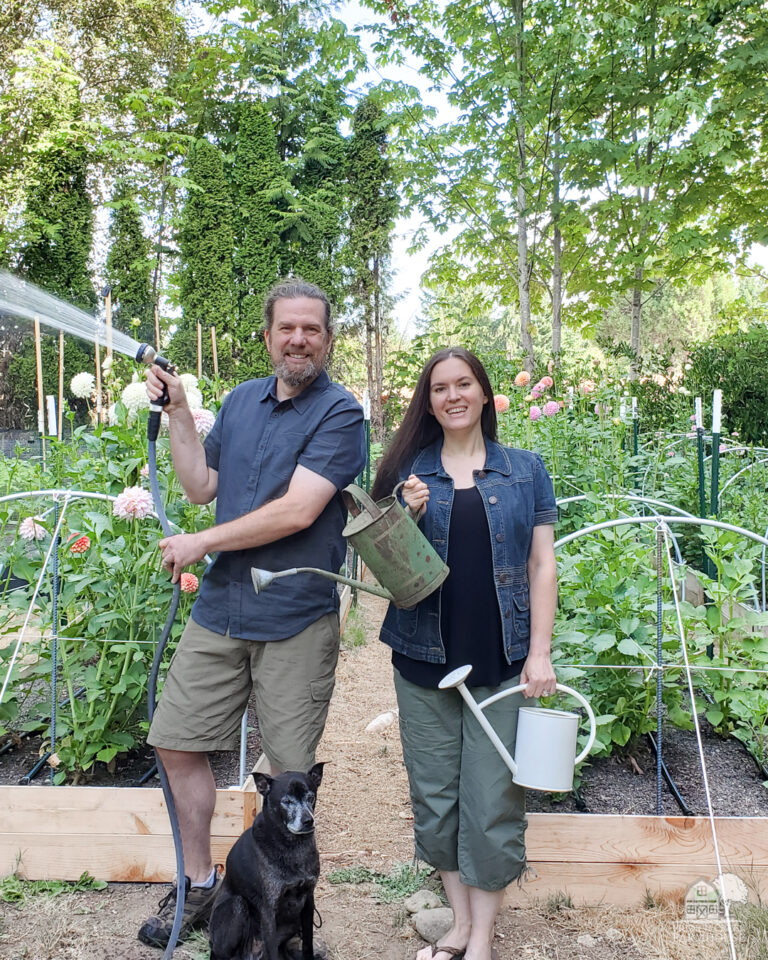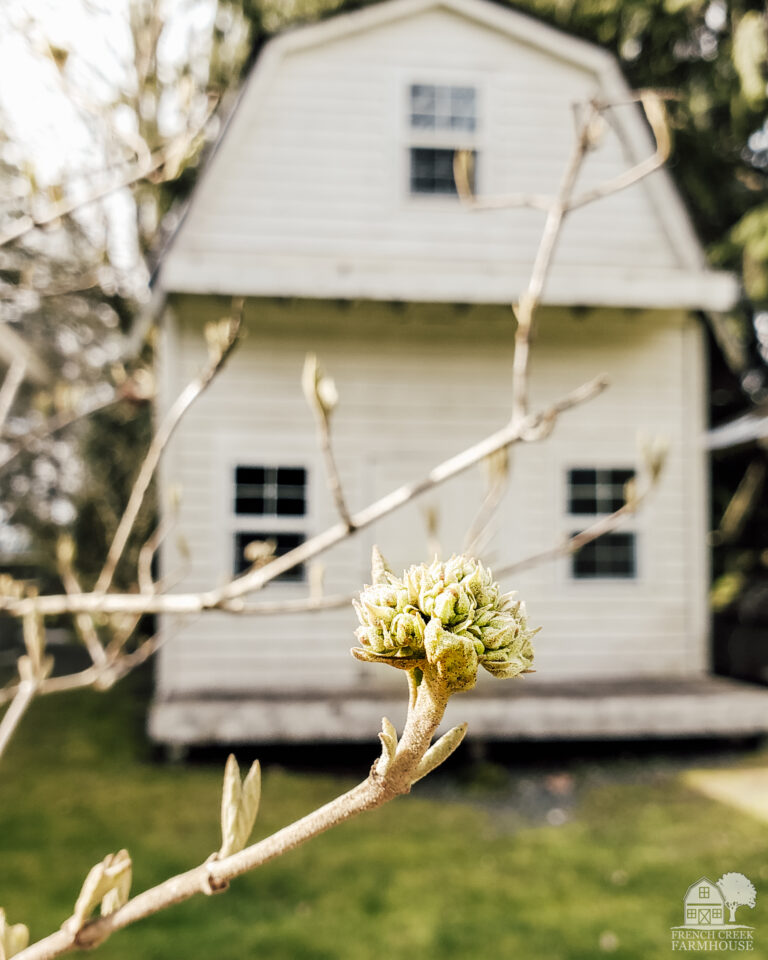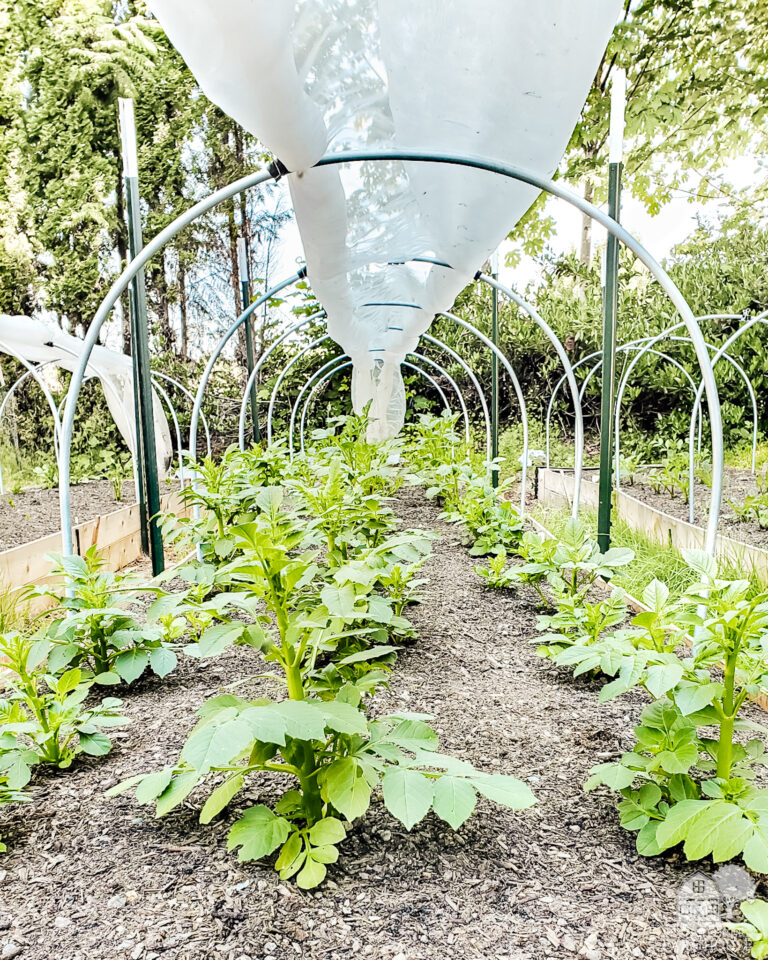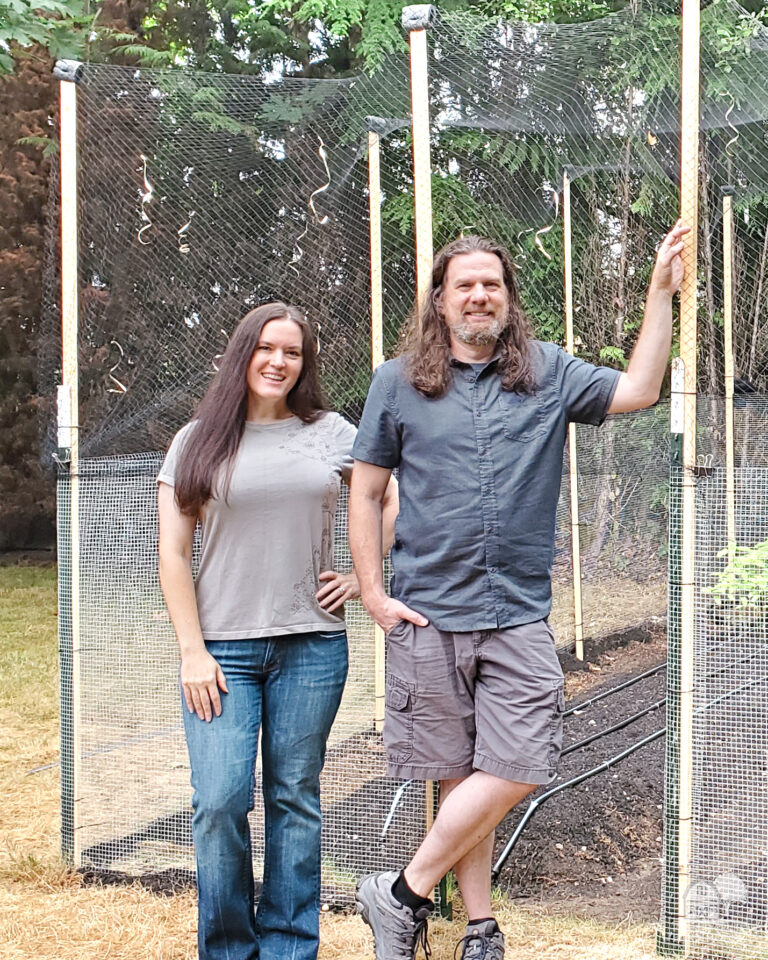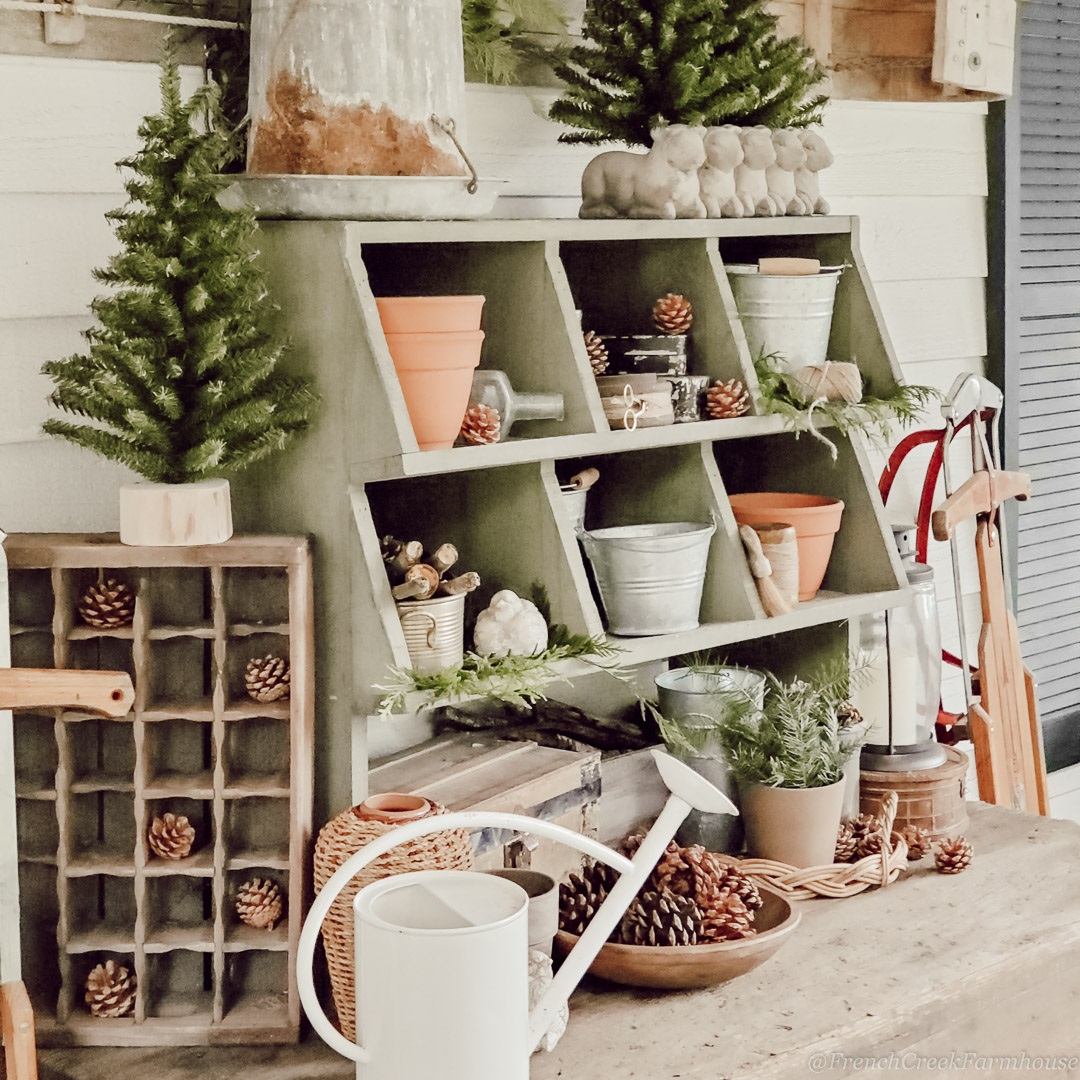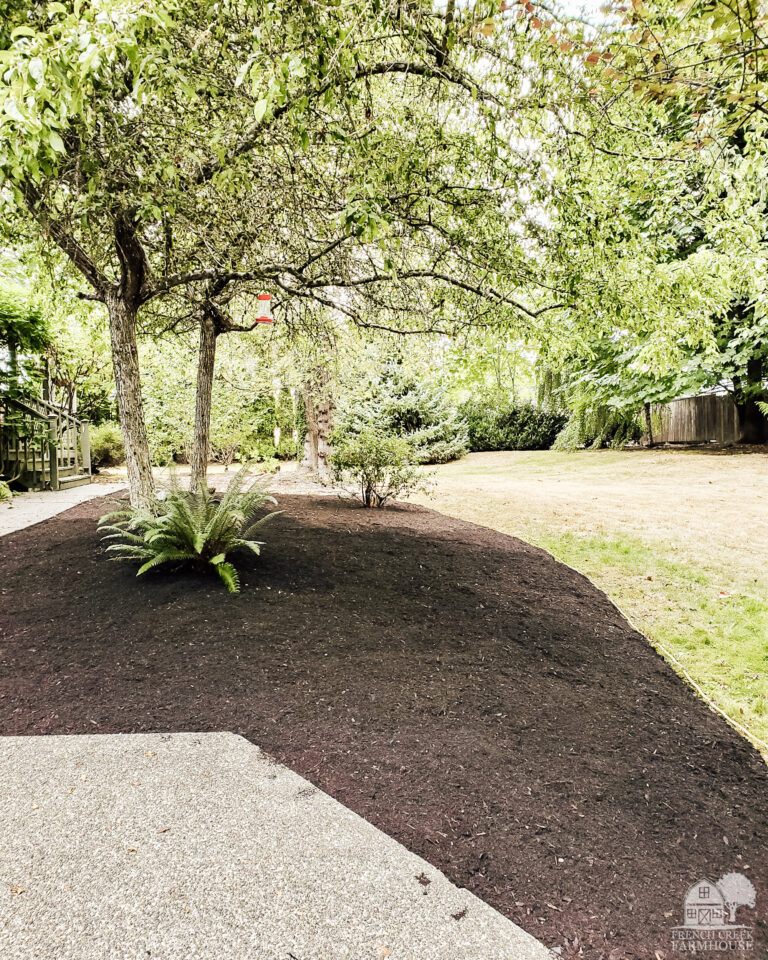Prepping Our Raised Beds for Summer
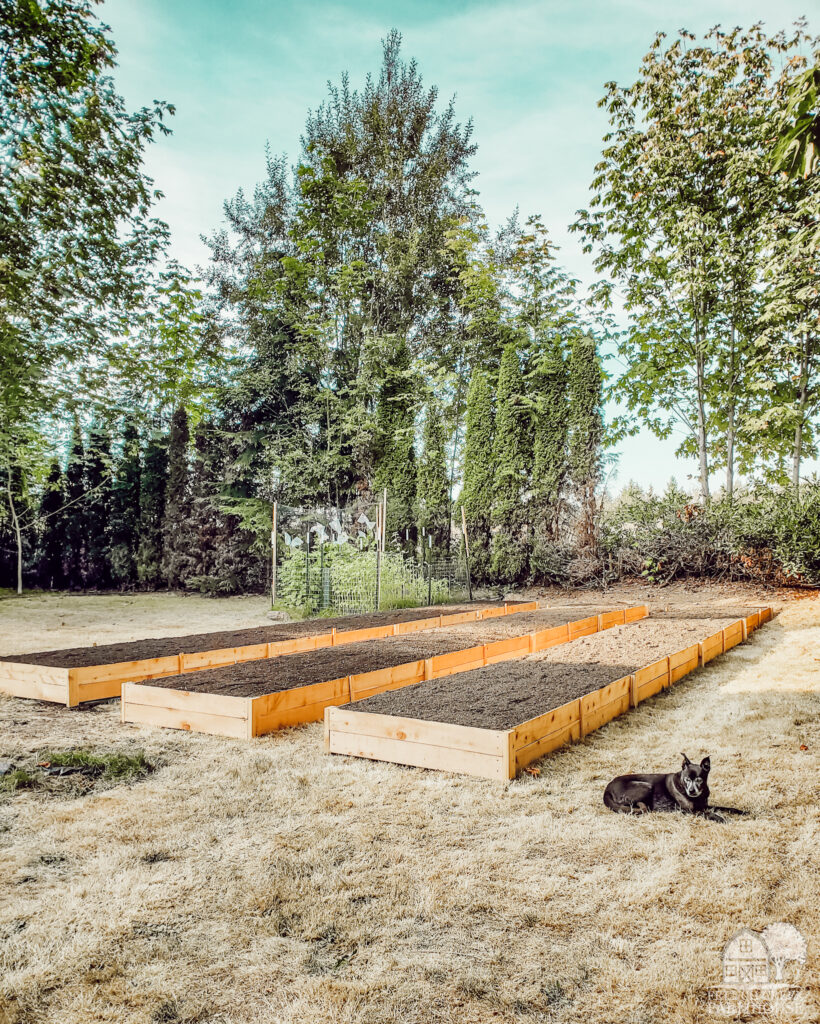
We’re just beginning this season of flower farming, and we’re already feeling like we’re scrambling a bit to keep up! Before we can get our dahlias planted, it’s time for us to start prepping our raised beds.
If I’m just being totally honest, springtime got the better of us this year.
The challenge for us, now, is trying to make sure we can get back on track for summer!
So, what happened to cause this upheaval of our schedule, you ask?
First, we had some family stuff to tend to, which is always the priority. Then, Rob caught COVID (again!), which basically took him out of commission for our spring tulip and daffodil harvest.
By myself, I couldn’t manage to both harvest spring and get started on summer crops. Since I developed POTS, my body just won’t put up with that workload. Instead, we share the work around here, with Rob doing the more physical tasks (tilling, moving compost, hauling around heavy stuff), while I do the things that are easier to do while seated (planning crops, starting seeds, tending the baby plants, making bouquets, etc).
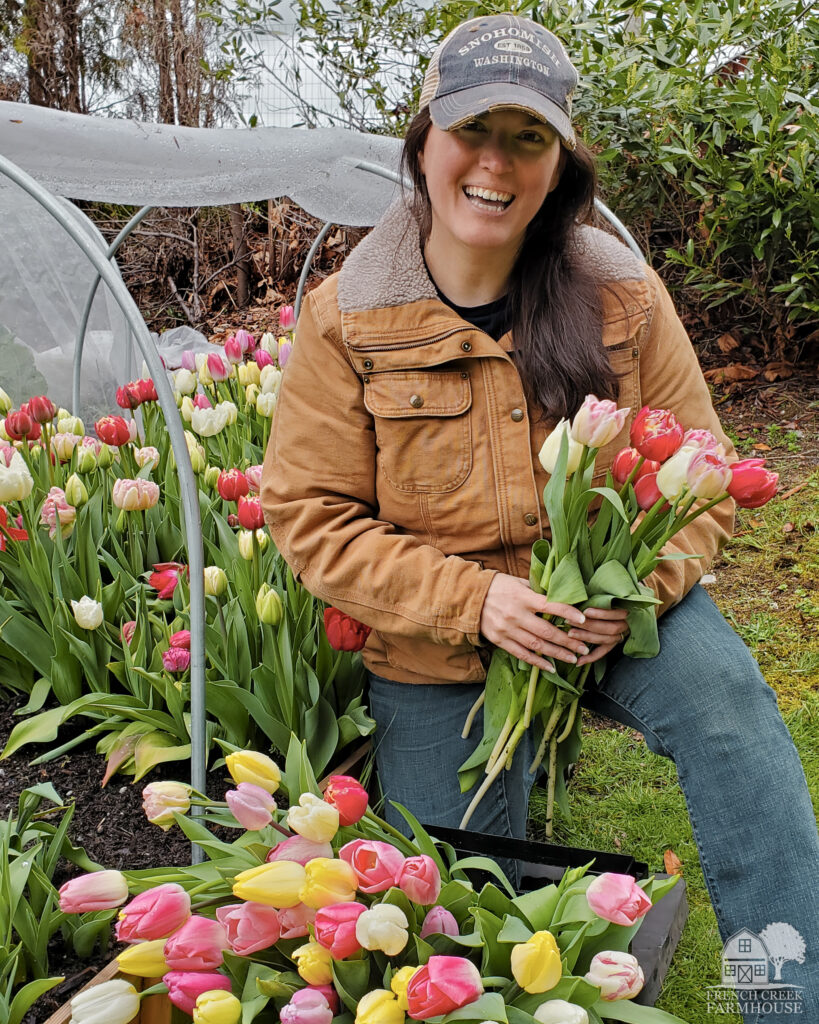
Together, we make a great team. But when one of us is inoperative, that’s a big problem. It’s definitely one of the challenges of farming–there are no sick days!
Once Rob recovered, we started hustling to get work done…but then, the heat came on unusually fast for the Pacific Northwest. We went from too cold to plant anything to 90°+ in only about 10 days–a major difference from our normal slow springtime warm-up in this part of the country.
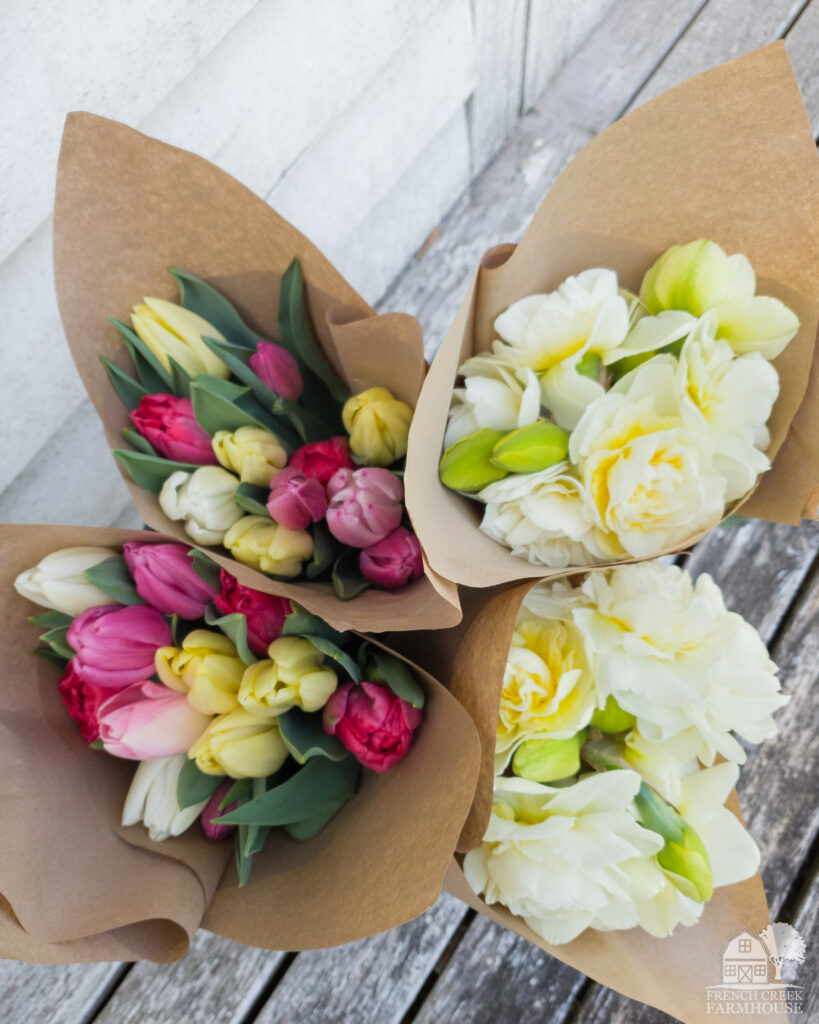
Our Biggest Priority Now? Planting the Dahlias!
Normally, dahlias will go into the ground around Mother’s Day here in the PNW, but that’s not always the case. For comparison, last year we weren’t able to plant our dahlias until the beginning of June because it was still so cold.
What matters is that the soil temperature is about 60° before you plant your tubers. And for us, that tends to happen right around the middle of May. But again…not always.
This year, we had record high heat at the beginning of May! Technically, we could have planted our dahlias much earlier than normal, but since we were still getting caught up from the springtime shenanigans, the raised beds simply weren’t ready.
That high heat also took out a lot of our spring crops like ranunculus and anemones before they even had a chance to put on a full show. We did get some absolutely gorgeous blooms, but we should have had several more harvests if the heat hadn’t ended their production.
{Related: Spring Blooms in the Living Room}
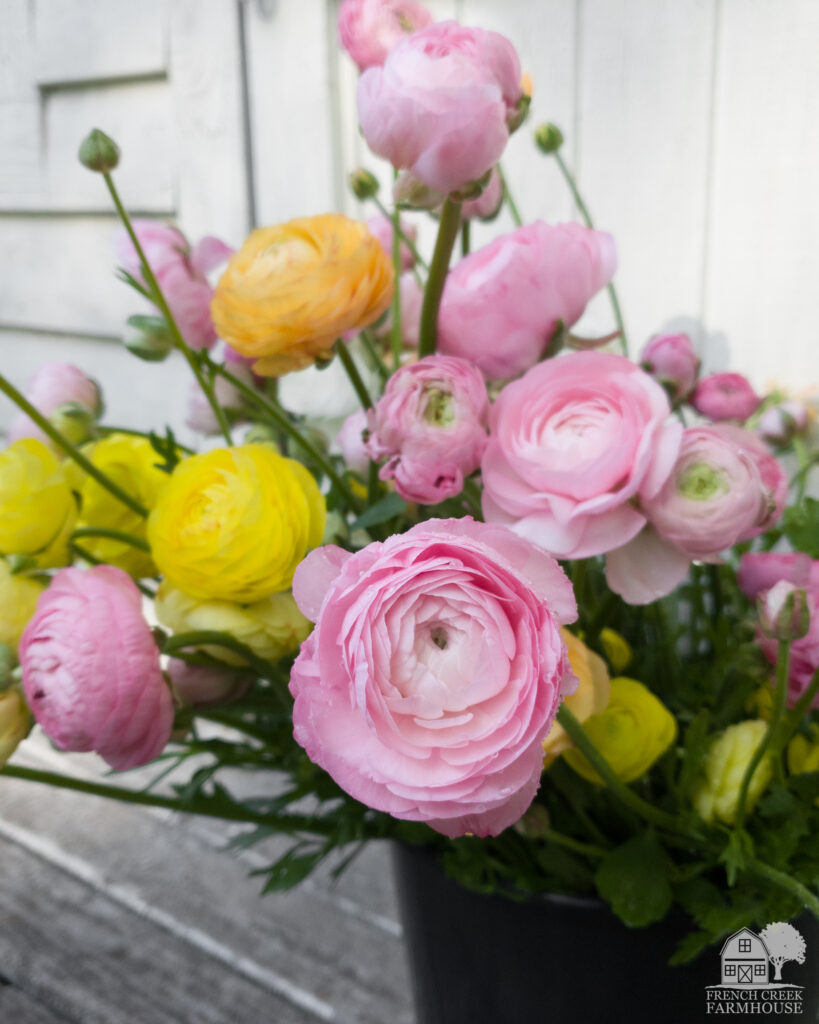
Growing Dahlias in Raised Beds: An Experiment
Our raised beds are an experiment for us this year. We have previously only grown field-planted dahlias (i.e. directly in the ground).
There are advantages and disadvantages to both methods which I’ll cover in a separate blog post because there’s a lot more to talk about on that front.
But the main point here is that we built some raised beds to try out this method, but still needed to flip them from our spring and veggie crops.
{Related: How We Created a New Landscaping Bed}
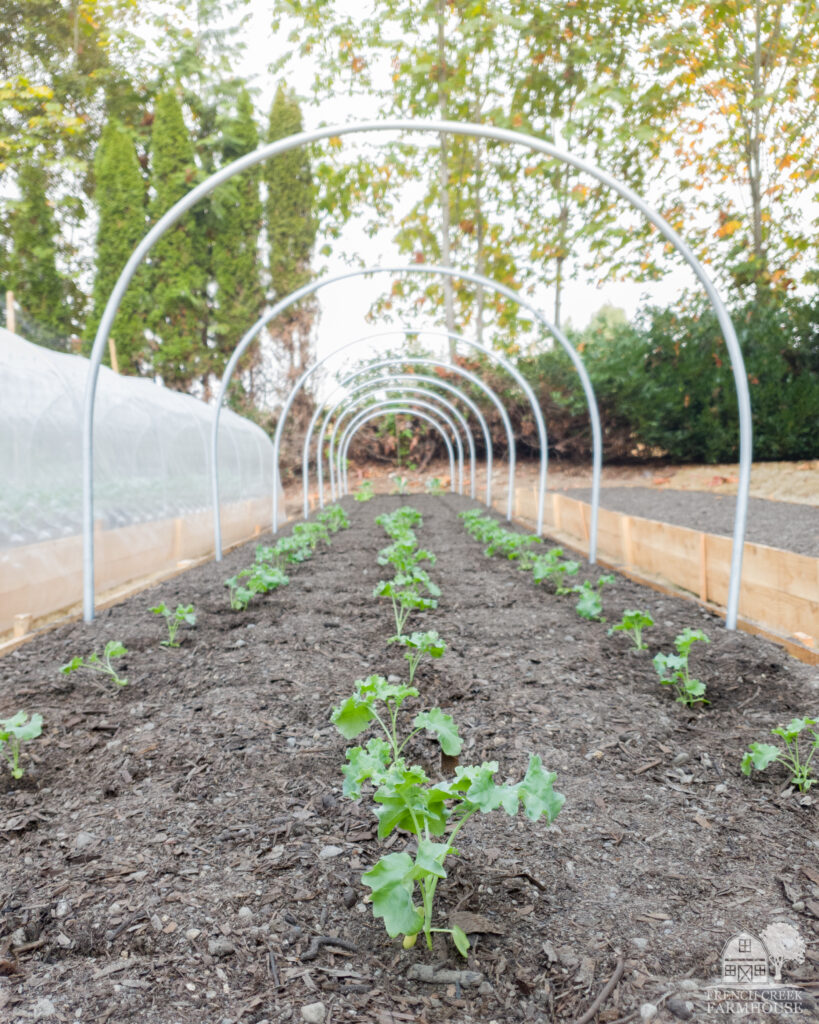
We pulled out all of the remaining spring blooms, harvested all of the veggies, and cleaned up all of the debris.
The beds were also in need of some reinforcements before we can think about planting them with our dahlias for summer. Because these beds were built as an experiment, we didn’t invest a whole lot into the lumber and building supplies.
Goodness knows, the price of lumber is crazy right now!
The beds ended up taking a bit of a beating because we had a whole lot of snow over the winter, so we needed to do a little retrofitting before anything else could happen.
We started by reinforcing the sides where bowing had occurred. Then we added T-posts which we’ll later use to corral our dahlias and prevent them from falling over when the blooms get heavy.
Finally, we topped each bed with 2-3″ of composted mulch mixed with sand. This mixture has worked well for us because the sand helps with drainage here in the soggy state of Washington.

Next Step: Planting Dahlias
After getting the raised beds prepped, they were officially ready to be planted with our dahlias. This is our favorite and most exciting time of the year!
Without a doubt, feeling like you’re behind and trying to catch up is a stressful experience. So far, it seems like we feel that way in every season of farming, and it doesn’t seem to matter how much we plan ahead or how hard we work.
I’m beginning to get a grasp on the idea that it’s just part of the way this work feels. Mother Nature waits for no one, and she doesn’t share her calendar with us either. We just do the best we can every day.
Some days we’ll feel like we’re on top of our tasks, and some days we’ll feel like we’re drowning.
But, as long as we keep showing up and doing the work, I think we’re on the right track.
If you haven’t already, be sure to subscribe to our YouTube channel–we’ll be sharing all of the dahlia varieties we’re planting for the year, and bringing you along for planting time, too!
We’re so excited to be kicking off the season and can’t wait to see what lies ahead. This is a thrilling adventure that we’re on, and we’re grateful to have your company for the journey!

Ready to dig in and grow something beautiful?
Get my Free Garden journal
Let’s be gardening buddies! Sign up to join our community, and get your free printable PDF Garden Journal. This is so good!
